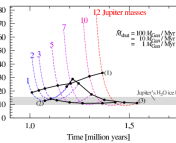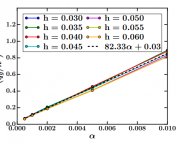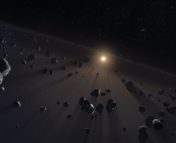Title: Super-Jupiters Migrate Outward
Authors: Adam M. Dempsey, Diego J. Muñoz, and Yoram Lithwick
First Author’s Institution: Theoretical Division, Los Alamos National Laboratory, Los Alamos
Paper Status: Submitted to AAS journals [open access on arXiv]
It’s nice to have the conclusion of a paper in the title – Super-Jupiters migrate outward. Today, let’s investigate what exactly this means!
Planets are like grad students – they move out very often
Alrighty, planetary systems are dynamic places. Bodies move around, in and out, quite often. Planets form in protoplanetary disks, where they move from their original position by exchanging the angular momentum and/or energy with the disk itself! This is what we call planetary migration due to the gas disk. This can be important for both terrestrial-mass planets and gas giants while the gaseous disk is still present. Planets can migrate inward or outward depending on the sign of the net (total) torque (which we get from the transfer of angular momentum/energy): if it’s positive, they migrate from the host star (outward); if it’s negative, they migrate towards the host star (inward). You can think of that as a pull from gas. It can be so strong that it makes a planet move!
There are three types of migration: Type I, Type II, and Type III. Type I migration is the migration of low-mass planets. The important thing about Type I migration is that the mass of a planet is so small (less than 10 Earth masses) that its migration does not affect the disk’s structure. But the Type II migration is the migration of higher mass planets, and their migration does affect the structure of a disk – it opens gaps (literally, areas with low density). Type III is similar to Type I but it’s faster. The authors of the paper are concerned about Type II migration, because Type II migration is not well-understood for Jupiter-mass planets, and even less understood for planets more massive than Jupiter. In this paper, the authors find that these super-Jupiters migrate outward in eccentric disks.
Why do planets migrate outward in eccentric disks?
The authors of the paper run 2D computer simulations with different viscosities, disk’s aspect ratios (the thickness to the radius ratio) and planet-mass ratios, because the torque depends on these three components. Let’s look at the results! On the top panel of Figure 1, we can see the migration rate in the y-axis. You can see that in the transition between negative values and positive values there’s the dashed line – it shows the transition between inward and outward migration. On the bottom panel of Figure 1, you can see the eccentricities on the y-axis, which is the measure of how circular a planetary orbit is: 0-eccentricity corresponds to a circular orbit, and 1 – to elliptical. If you compare the top and the bottom panels of Figure 1 (look for similarities, not differences!), you can see that markers that correspond to inward migration on the top also correspond to nearly circular orbits on the bottom. We can also see that the migration is outward for very eccentric orbits! However, when exactly does that transition from inward to outward migration happen? The authors did some math and found out that for some values of viscosity and a disk’s aspect ratio, this transition occurs when the planet exceeds two Jupiter masses – aka super-Jupiters, and, as I mentioned, this transition coincides with the disk becoming eccentric.
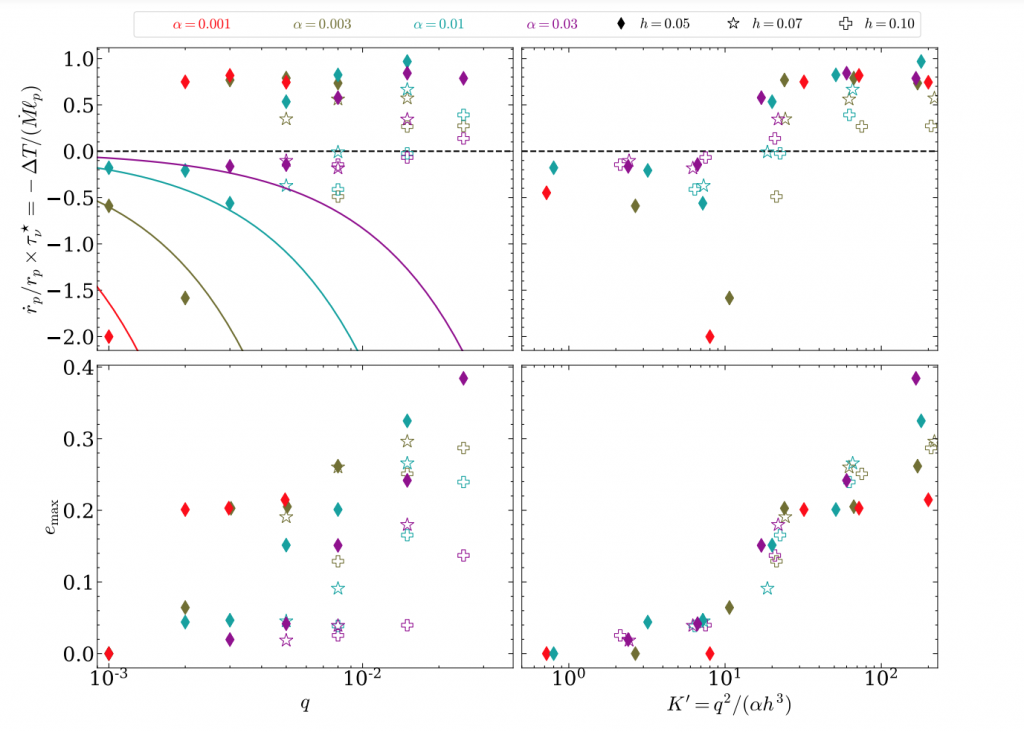
You can also see the outward migration on Figure 2. The top panels show the inward migration and the bottom panels show the outward migration. Now you can compare the surface density, the eccentricity, and the torque (left, middle and right panels, respectively). First, you can see the jump in surface density is wider in the bottom than in the top. This says that the gap that’s opening during the outward migration is larger. Second, it is clearly seen that the eccentricity is higher in the bottom panel, which, again, corresponds to eccentric orbits! And finally, that the total torques for inward and outward migrations are in different directions (you can see on the right panels, the graph increases until positive values on the top panel and stays in negative values on the bottom one), but the total torque for the outward migration is also smaller in magnitude. Therefore, it can be concluded that eccentric disks have more extended outer gaps and weaker outer torques. That’s, as the authors speculate, what leads to outward migration.
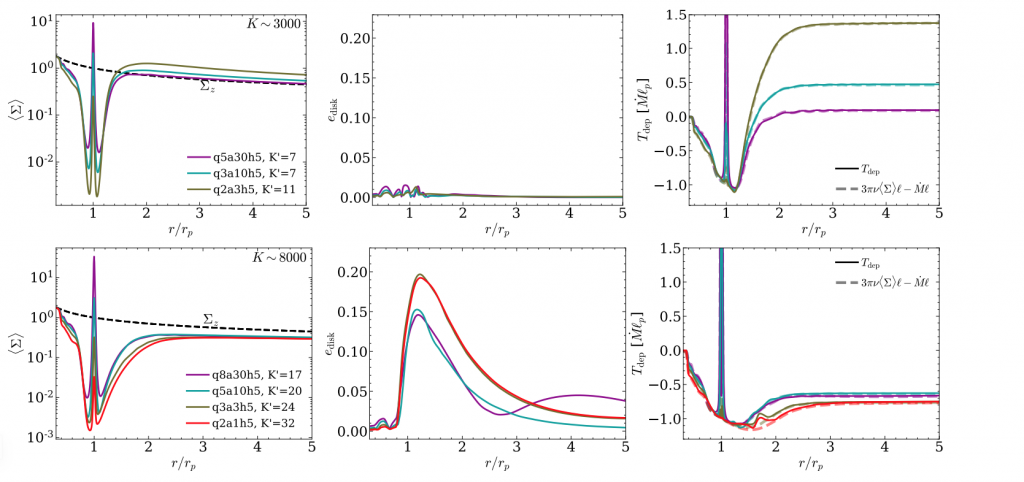
Did we actually see super-Jupiters migrating outward?
We cannot observe planetary migration in action because it will take much time for a planet to move. However, we can speculate how observed exoplanets reached their positions, and we actually think most of them migrated! The authors believe that their two-Jupiter-mass threshold is similar to the lowest mass giant planets discovered via direct imaging. Therefore, the formation of these super-Jupiters could be followed by the outward migration in an eccentric disk. The authors also mention that it has indeed been speculated that the properties of directly imaged planets can be explained by outward migration. This would be an exciting result for the planet formation theory, because there’s still so much we don’t know!
Astrobite edited by: Alice Curtin
Featured image credit: canstockphoto

